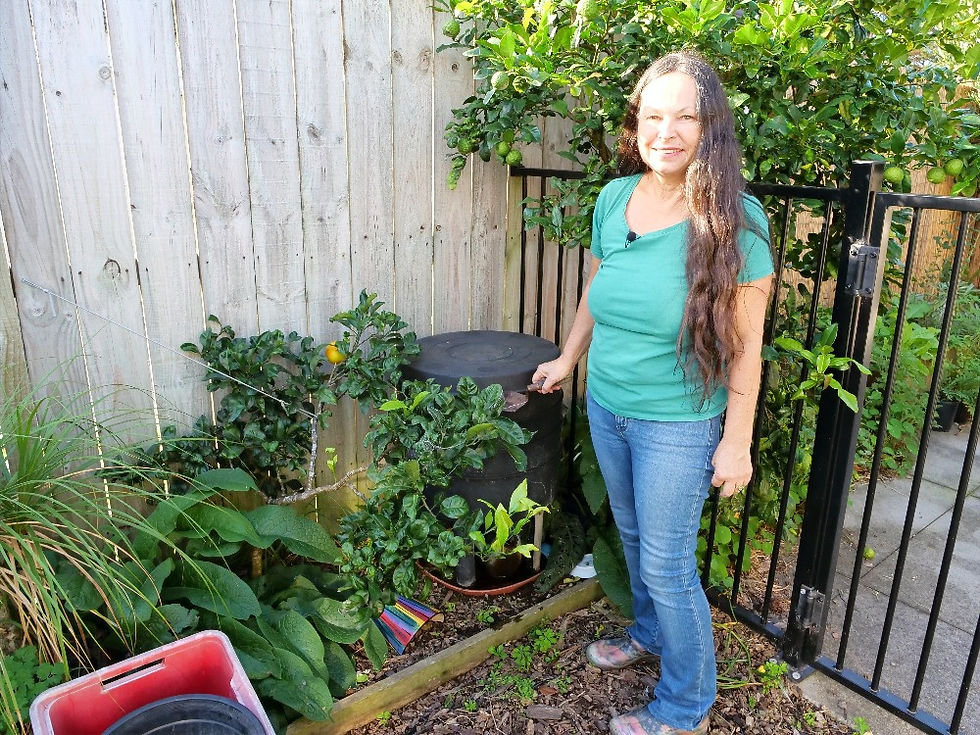How do I turn my lawn into garden?
- Toni Kenyon

- Jan 19, 2021
- 3 min read
Updated: Mar 6, 2021

I’m a great believer in growing food, not lawns. It’s incredible the amount of resources that go into keeping a blanket of green growing in the front of a home.
Most people are completely unaware of where the penchant to grow lawn even came from, it’s just something that they do and many of them do it with considerable moaning and cursing.
How many times do you hear people whining about having to cut the grass, or going out to water the lawn in the baking sunshine?
Put simply, that patch of grass in front of your home is simply an old-fashioned status symbol.
This strange fortnightly (or sometimes weekly) ritual of running a petrol guzzling, weed-slashing, rotating blade over the resource sucking front and/or back lawn came about because of our ancestor’s efforts to show their neighbours that they were wealthy enough not to have to grow food on their land.
Sounds strange, right? But it’s a true story.
Back in the early days, when we were all mainly peasant farmers tilling our Lord’s land, we needed to use the surrounding land to grow what we were eating.
If you were wealthy enough to have sizeable areas of grass around you, then it was likely that you could afford to pay persons to scythe that long growing grass for you. The long grass could be fed to livestock (or livestock could be grazed on the grounds) but the fact that you had large ‘green spaces’ around your home meant that you were wealthy.
Now we’re lumbered with a green space that many of us pay somebody else to come around a mow. That’s not even considering the wasted water, fertilisers and other unmentionable chemicals that are used to manage these wastes of space.
Why not use that space to create a diverse, ecologically sound, living environment?
You can make a home for birds, insects and local wildlife as well as creating a source of food for yourself.
The easy way to rid yourself of useless lawn.
But how do I get rid of my lawn and turn it into a garden without breaking my back?
I’m glad you asked.
You smother it.
That’s right, you heard me.
Grass is actually relatively easy to kill. Without light, it goes brown and dies pretty quick. Have you ever left a chair, or a box of rubbish or something similar on the lawn for a couple of days and when you remove it, the grass has gone yellow/brown? It’s the same system, only you don’t remove what you put on top of the lawn.
So you smother that stuff with whatever you have to hand.
My favourite method is laying a thick layer of damp cardboard over the grass and then laying a deep mulch on top of the wet cardboard. The mulch can be anything, compost, bits of scraps from the kitchen mixed with lawn clippings or straw. Arborists wood chips are excellent and we’ve laid a lot of those around our back garden.
The cardboard will smother the grass and the worms will come up to eat the damp cardboard. They work like unpaid labour turning the ground over and all the layers eventually mix together to make a wonderful, rich loam.
You can plant straight away into this mixture. I just dig down to the wet cardboard, throw in a good couple of handfuls of compost and plant straight into the compost. I pull the mulch back around the seedling I’ve planted (or I leave the ground open if I’ve just planted seeds) and everything grows really well.
But what if I have evil grass like, kikuyu, or buffalo grass, or couch grass?
No problems, just make sure that no light gets anywhere near the runners, patrol the edges of your garden and with the odd judicious “pulling” of the few tendrils that escape from under your much, you’ll still be able to wipe out the grass.
I battle kikuyu and couch (twitch) grass which are both really invasive. The chickens help, but it’s mainly a matter of pulling out the stray pieces that try to grow and eventually I find that the grass runs out of energy (because it’s getting no light) and it doesn’t come up again.
So there you go.
Let me know about your adventures, turning that frustrating lawn into something beautiful and bountiful.
Love Toni








Comments